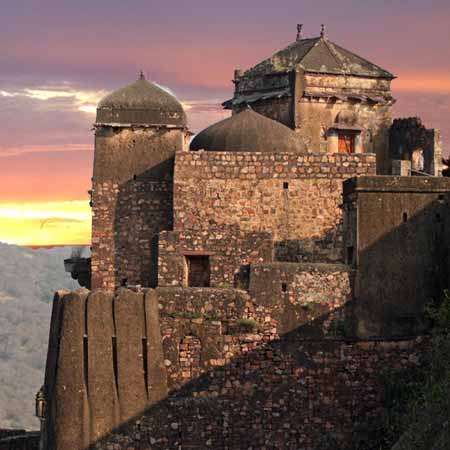Ranthambore Fort
 The Ranthambore Fort is an impressive historic monument situated in Ranthambore National Park. No visit to National Park Ranthambore can be complete without a visit to this magnificent structure.
The Ranthambore Fort is an impressive historic monument situated in Ranthambore National Park. No visit to National Park Ranthambore can be complete without a visit to this magnificent structure.
The Ranthambore Fort spreads over an area of 7 Km and offers spectacular views of the National Park Ranthambore. It is believed to be among the oldest forts built in India. Its construction is dated to the reign of a Chauhan king of 944 A.D. Many rulers are said to have attacked this impregnable fort. Some of the invaders were Alaudin Khilji, Qutub-ud-din-Aibak, Feroz Tughlaq, and Bahadur Shah of Gujarat.
It is said that a 1000 women committed Sati, following the Rajput practice of self-immolation when the fort was finally conquered. Among the rulers who occupied this fort are Raja Hammir in the 11th century and the Mughal Emperor Akbar, in 1558-59. The fort was then given back to the rulers of Jaipur who preserved the forest around the fort as their royal hunting ground. This act of conservation led to the eventual creation of Ranthambore National Park.
The excellence of the construction of the Ranthambore Fort can be seen in its enduring structures even today. Some of the amazing structures within the Ranthambore Fort are the Hammir Court, which has superb acoustics. A whisper at one end of the Hammir Court can be heard clearly at the other end. A perennial stream called the Gupta Ganga provides the fort with its water supply. A series of steps are cut into the rock and lead down to flowing water. There are many temples within the Ranthambore Fort, including a temple to Lord Ganesh and a temple to Lord Hanuman, where numerous langurs and monkeys can be found.
On Tours to Ranthambore Fort, do carry a pair of binoculars with you. From the ramparts of the fort, you can see the lake nearby and spot animals, including tigers, as they come to drink beside the lake



